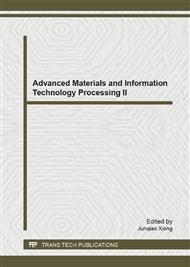[1]
Iijima S. Helical microtubes of graphic carbon, Nature, 354 (1991) 56-58.
Google Scholar
[2]
De Heer WA, Chatelain A, Ugarte D. A carbon nanotube field emission electron source. Science, 270(1995) 1179-1180.
DOI: 10.1126/science.270.5239.1179
Google Scholar
[3]
Bonard JM, Croci M, Klinke C, et al. Carbon nanotube films as electron field emitters. Carbon, 40(2002) 1715–1728.
DOI: 10.1016/s0008-6223(02)00011-8
Google Scholar
[4]
Jung JE, Choi JH, Park YJ, et al. Development of triode-type carbon nanotube field-emitter arrays with suppression of diode emission by forming electroplated Ni wall structure. J. Vac. Sci. Technol. B, 21 (2003) 375-381.
DOI: 10.1116/1.1516181
Google Scholar
[5]
Chung DS, Park SH, Lee HW, et al. Carbon nanotube electron emitters with a gated structure using backside exposure processes. Appl. Phys. Lett., 80 (2002) 4045-4047.
DOI: 10.1063/1.1480104
Google Scholar
[6]
Li Y, Zhu C, Liu X. Field emission display with carbon nanotubes cathode: prepared by a screen-printing process. Diam. Relat. Mater., 11 (2002) 1845-1847.
DOI: 10.1016/s0925-9635(02)00171-1
Google Scholar
[7]
Shi YS , Zhu CC , Wang Q, et al. Large area screen-printing cathode of CNT for FED. Diam. Relat. Mater., 12 (2003) 1449-1452.
DOI: 10.1016/s0925-9635(03)00170-5
Google Scholar
[8]
Li J, Lei W, Zhang X, et al. Field emission characteristic of screen-printed carbon nanotube cathode. Appl. Surf. Sci., 220 (2003) 96-104.
DOI: 10.1016/s0169-4332(03)00749-9
Google Scholar
[9]
Itoh S, Tanaka M. Current status of field emission displays. Proceedings of the IEEE, 90 (2002) 514-520.
DOI: 10.1109/jproc.2002.1002523
Google Scholar
[10]
Wang XQ, Wang M, He PM, et al. Model calculation for the field enhancement factor of carbon nanotube, J. Appl. Phys., 96(2004) 6752-6755.
Google Scholar
[11]
Wang XQ, Wang M, Li ZH, et al. Modeling and calculation of field emission enhancement factor for carbon nanotubes array, Ultramicroscopy, 102 (2005) 181–187.
DOI: 10.1016/j.ultramic.2004.08.009
Google Scholar
[12]
Filip V, Nicolaescu D, Tanemura M, et al. Modeling the electron field emission from carbon nanotube Films, Ultramicroscopy, 89 (2001) 39–49.
DOI: 10.1016/s0304-3991(01)00107-3
Google Scholar
[13]
Xue ZQ, Wu QD. Electron emission and electron spectrum. Peking University Press, Beijing, 1993 (in Chinese).
Google Scholar
[14]
Chen Y, Deng SZ, Xu NS, et al. Physical origin of non-linearity in Fowler–Nordheim plots of aligned large area multi-walled nitrogen-containing carbon nanotubes, Mater. Sci. Eng A, 327 (2002) 16–19.
DOI: 10.1016/s0921-5093(01)01871-8
Google Scholar
[15]
Zeng FG, Zhu CC, Liu X, et al. A novel mechanical approach to improve the field emission characteristics of printed CNT films, Mater. Lett., 60 (2006)2399-2402.
DOI: 10.1016/j.matlet.2006.01.022
Google Scholar


